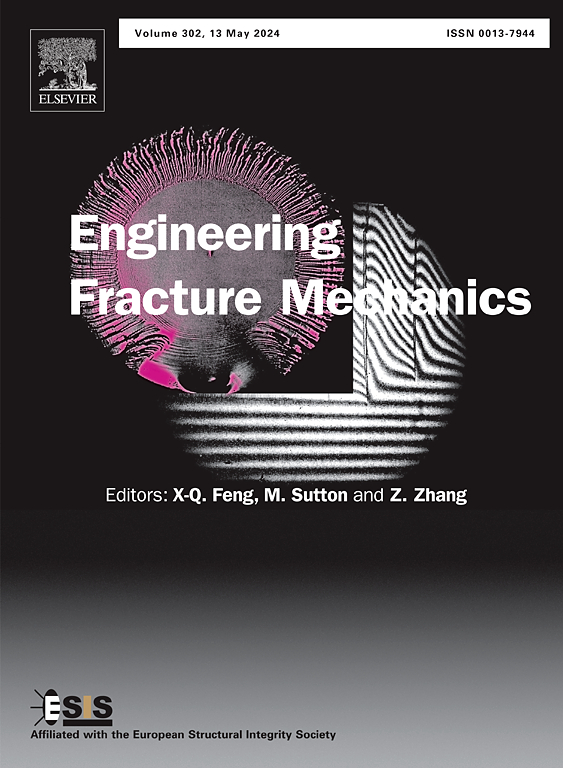The influence of biaxial loads on the dynamic crack interaction of two opposite propagating
IF 4.7
2区 工程技术
Q1 MECHANICS
引用次数: 0
Abstract
The depletion of shallow resources has prompted mining activities to move deeper regions, and the presence of geostress significantly affects the propagation behavior of cracks. However, the propagation law and underlying mechanism of explosive cracks under different biaxial stress fields remain unclear. This study employs dynamic photoelastic testing method to achieve stress visualization and applies different biaxial loads to epoxy resin specimens. It simulates the propagation behavior of two opposite propagating explosive cracks under different geostress conditions and examines the effects of explosive stress waves and stress fields at crack tips on nearby cracks. The results indicate that during the interaction phase of cracks, there are Type I circular fringes dominated by , characterized by small in the middle and large on both sides of the photoelastic fringes, while Type II circular fringes dominated by , exactly the opposite; Under the same conditions, the inhibitory effect of the pressure in the direction of vertical crack propagation is greater than the promoting effect of that of parallel crack propagation; The final propagation direction of the main crack is basically the same as the propagation direction of the explosive stress wave and the maximum principal stress. The research results contribute to reveal the dynamic propagation law of cracks under high geostress and provide strong support for the engineering application of directional fracture blasting.
求助全文
约1分钟内获得全文
求助全文
来源期刊
CiteScore
8.70
自引率
13.00%
发文量
606
审稿时长
74 days
期刊介绍:
EFM covers a broad range of topics in fracture mechanics to be of interest and use to both researchers and practitioners. Contributions are welcome which address the fracture behavior of conventional engineering material systems as well as newly emerging material systems. Contributions on developments in the areas of mechanics and materials science strongly related to fracture mechanics are also welcome. Papers on fatigue are welcome if they treat the fatigue process using the methods of fracture mechanics.

 求助内容:
求助内容: 应助结果提醒方式:
应助结果提醒方式:


